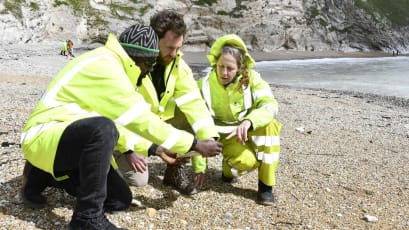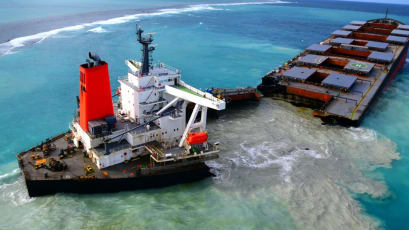Climate resilience in oil and gas: managing the risks of extreme weather events
In today's rapidly changing climate, extreme weather events are no longer considered unpredictable acts of nature. The devastating impacts of climate change, such as catastrophic floods, hurricanes, and wildfires, have highlighted the urgent need for companies to develop resilience in the face of these challenges. Beyond regulatory and ethical obligations, businesses must now prioritise risk management to avoid the loss of life and prevent financial losses, reputational damage, and environmental destruction.
The implications of these extreme weather events are far-reaching, affecting ecosystems, agriculture, infrastructure, and human populations. As these events continue to increase in occurrence, organisations operating in the oil and gas industry could face significant challenges in managing risks associated with extreme weather events and hydrocarbon spills. Estimates suggest that 40% of global oil & gas reserves are threatened by the physical impacts of climate change. (Maplecroft, 2021). The sector is vulnerable to a range of physical risks, including increasing temperatures, sea-level rise, flooding, storms, and droughts.
This article explores the necessity of developing resilience to climate change extreme weather events. It delves into the impacts of recent incidents, such as the Norilsk industrial disaster in Russia and the Bahamas oil spill caused by Hurricane Dorian. By examining these events, the article aims to shed light on the importance of anticipating and managing the risks associated with extreme weather events. It also discusses the role of various methodologies, such as the Reimagined Disaster Incubation Theory and ISO 31000, in enhancing preparedness and resilience.
Why resilience to extreme weather matters
In 2020, Norilsk, a major mining city in northern Russia, experienced an industrial disaster that resulted in the loss of 21,000 tonnes of diesel fuel. This fuel spill extended beyond containment measures, polluting the environmentally sensitive tundra in the Arctic region. The failure of the fuel storage tank was in-part attributed to a lack of non-destructive testing, which could have identified corrosion and the melting permafrost caused by unprecedented warm weather. This incident highlights the need for proactive measures to prevent and mitigate the impacts of extreme weather events.

Similarly, in 2019, the Bahamas incident occurred when Hurricane Dorian, a Category 5 storm, made landfall over the Abaco Islands and Grand Bahamas. Unprecedented wind speeds caused the roofs of oil storage tanks to fail, releasing an estimated 119,000 barrels of oil. The spilled oil spread across vast areas of forest and inland marshes, causing significant environmental damage. Although the storage facility design accounted for hurricane risks, the unprecedented wind speeds exceeded predictions, emphasising the need for enhanced preparedness.
Less than 2 years later the supply of crude oil and refined products were disrupted and 55 spills recorded in the Gulf of Mexico as a result of Hurricane Ida (Maplecroft, 2021).

Over 40% of commercially recoverable oil and gas reserves are highly exposed to the effects of climate change.

Predicting climate extremes: preparing for what’s next
While many industries have experience in identifying and mitigating operational risks, extreme weather events present unique challenges. The lack of precedence and the increasing frequency and severity of these events make it difficult to predict and prepare for them effectively. Physical proximity and acute exposure to risks may provide valuable insights, with regional affiliates potentially leading preparedness activities. However, even those living closest to the risks may struggle to plan for the unimaginable as extreme weather events become more frequent and severe.
The World Meteorological Organization predicts that temperatures will surge to new record levels within the next five years. This will likely lead to more regular and severe extreme weather events, making resilience dependent on organisations' ability to anticipate and manage the likelihood and consequences of such events. From unprecedented floods and wildfires to droughts and storms, the effects of climate change demand proactive measures.
From reaction to prevention: rethinking emergency planning
The urgency to decarbonise and transition to clean energy is undeniable. However, this transition will take time, and the planet will continue to warm, resulting in more frequent and severe extreme weather events.
From Africa to Antarctica, all seven of Earth’s continents experienced extraordinary extreme weather events in July 2023. The start of July saw Earth experience its hottest week on record. The World Meteorological Organisation warned that July 2023 could be the world's hottest month ever, signalling the arrival of the "era of global boiling." As if to prove a point, Southern Europe, across Greece, Italy, Spain, Portugal, Turkey and Switzerland witnessed devastating wildfires that claimed lives, destroyed property, and scorched vast areas of land.
The South Korean summer of this year brought forth the relentless monsoons, resulting in catastrophic flooding that tragically claimed 46 lives and forced 5500 people from their homes. In response, President Yoon Suk Yeol pointed to a lack of preparedness; however, as the intensity of these downpours escalates, a sobering realisation is dawning upon the public. It's becoming increasingly evident that these events might signify only the initial rumbles of a larger storm on the horizon. With this awareness comes a resounding call from the populace for a fundamental re-evaluation of how our society plans for and handles the impact of natural disasters.
These incidents, along with intense North American forest fires, demonstrate the urgent need to adapt energy generation, city planning, infrastructure design, and emergency response to tackle the challenges posed by extreme weather events.
 |
 |
Tools for building climate resilience
Industries known for their resilience, such as aviation, have built enviable safety records through lessons learned from numerous disasters. Similarly, major ship-sourced oil spills have been significantly reduced due to stricter regulation and technological advances. While we can’t avoid extreme weather events, organisations can increase their resilience.
The Reimagined Disaster Incubation Theory, proposed by Lauder in 2016, offers a framework for identifying potential failures and enhancing risk communication and employee engagement. By applying this theory before an event occurs, organisations can identify "weak signals" that may indicate structural instability or other risks. For instance, in the case of the Norilsk spill, recognising the consequences of melting permafrost could have led to changes in how hydrocarbons are stored in the Arctic region.
The debate revolves around whether organisations can warrant investing the time and resources to contemplate all extenuating circumstances and mitigation strategies for risks that could carry significant consequences but, in the end, have limited likelihood.
Another approach is utilising ISO 31000, a comprehensive risk management framework that emphasises stakeholder participation and the integration of risk management into an organisation's processes. Applying this framework to the Bahamas incident highlights the challenges of determining risks in complex and uncertain scenarios, such as the environmental impacts of wind-dispersed oil.
While both these methodologies are purposely broad and provide valuable guidance, organisations must determine the extent to which they invest time and resources in considering all possible risks and mitigation measures.
Conclusion: adapting crisis response to a warming world
The trajectory of global warming is set to persist, leading to an escalation in the frequency and scope of extreme weather phenomena. In light of this reality, industries must undergo adaptation in order to effectively brace themselves for these occurrences and manage the subsequent aftermath.
Presently, grappling with the ability to anticipate and pre-emptively address these risks, along with their potential cascading effects, poses a substantial challenge. While existing risk management methodologies offer advantages—such as the ISO regulations that furnish a standardised framework embraced by industries—they struggle when confronted with ambiguity. Embracing novel perspectives and strategies, like the Reimagined Disaster Theory, is imperative for enhancing foresight, bolstering mitigation efforts, and fortifying resilience.
Emergency planners find themselves navigating a distinct breed of chaos that diverges from the scenarios their crisis management counterparts are accustomed to. Gleaned experiences and insights from future disasters must not be disregarded or siloed from other systems. Often, new regulations, improved standards, or innovative technologies emerge as a response to significant incidents. For responders, this translates to a need to adapt trusted processes and procedures, exemplified by the adjustment of the Shoreline Clean-up Assessment Technique (SCAT) for use in inland environments during the Bahamas' response.
Beneath the surface lies an ethical quandary. Extreme weather events frequently precipitate loss of life. Amidst critical infrastructure damage, stretched resources, and human suffering, response managers must adeptly balance operational requirements with humanitarian endeavours, ensuring their objectives remain aligned with the prevailing conditions.





